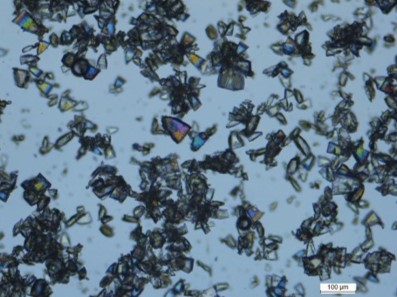



CD BioGlyco provides several Lac analysis services for clients for example NMR, cryoscopy, enzymatic kits, HPAEC-PAD, and so on. For different concertation of Lac, we have established different analysis programs. We aim to be your first choice about Lac analysis.
Human milk includes around 7% lactose and 1% complex human milk oligosaccharides (HMOs). Lactose, a disaccharide made up of glucose and galactose, serves as a source of energy in milk. It is made up of a d-glucose and a d-galactose molecule linked together by a β-1,4-glycoside. The full name of the substance is β-O-d-galactopyranosyl-(1-4)-d-glucopyranose (α-lactose) or β-O-d-galactopyranosyl-(1-4)-d-glucopyranose (α-lactose). Two isomeric forms of lactose—α- and β-lactose—differ in the steric arrangement of the hydroxyl group on the C-1 moiety of glucose.
 Fig.1 The molecular structure of α-lactose. (PubChem and Wikipedia)
Fig.1 The molecular structure of α-lactose. (PubChem and Wikipedia)
In the past, a variety of techniques, including polarimetry, mid-infrared detection, gravimetry, differential pH, and enzymatic methods detecting either the glucose or galactose moiety of lactose and high-performance liquid chromatography, have been used and accepted by analytical standard agencies to measure lactose in milk. The drawback of these techniques is that they are not sensitive or specific enough to measure lactose at low concentrations, despite the fact that they are frequently quick, easy, or affordable to use.
There is currently no international standard analysis method for determining lactose in low- or lactose-free samples, especially in human milk. But some common and powerful analysis methods can be used in lactose analysis for reference.
 Fig.2 Crystals of lactose. (Halfwerk, et al., 2023)
Fig.2 Crystals of lactose. (Halfwerk, et al., 2023)
HPAEC-PAD, a new technique, demonstrated outstanding sensitivity and selectivity with straightforward sample preparation. When compared to a number of widely used analytical methods for quantifying lactose, HPAEC-PAD on a CarboPac PA100 column is a very excellent option for the analysis of residual lactose in lactase-treated UHT milk.
 Fig.3 Typical HPAEC-PAD profile obtained for a lactose-free dairy product. (Mangan, et al., 2018)
Fig.3 Typical HPAEC-PAD profile obtained for a lactose-free dairy product. (Mangan, et al., 2018)
HPLC-RI method is commonly used (as a chromatographic technique) due to the ease of availability, operation, and low cost of RI detectors in HPLC systems as compared to specific PAD or MS detectors.
NMR involves less sample preparation, enabling quick and accurate analyte measurement. For the purpose of detecting lingering lactose in both traditional lactose-containing milk and lactose-containing milk, several studies used NMR (LHM). They discovered that up to 3000 mg/L of residual lactose in LHM samples could be precisely quantified using NMR.
There are several enzymatic kits on the market that, in the first stage, hydrolyze lactose utilizing enzymes into glucose and galactose before estimating the amount of remaining lactose using two separate biochemical routes. The lactose/D-galactose kit operates under the principle that galactose dehydrogenase reacts with released galactose in low-lactose milk to create galactonic acid and simultaneously release NADH.H+. The amount of D-galactose contained in the sample directly correlates with the amount of NADH.H+ emitted during the reaction.
 Fig.4 A workflow of lactose / D-galactose - enzymatic assay kit. (CD BioGlyco)
Fig.4 A workflow of lactose / D-galactose - enzymatic assay kit. (CD BioGlyco)
The dairy sector frequently uses cryoscopy to monitor the lactose hydrolysis process since it is quick, easy to use, inexpensive, and has a good correlation with polarimetry and other enzymatic techniques. Milk cryoscopy relies on the measurement of the liquid's freezing point, which has a tendency to drop as the number of molecules in the medium rises as a result of the release of monosaccharides by the action of -galactosidase on lactose molecules.
CD BioGlyco has an advanced analytics platform for Lac (or other samples) analysis services, based on HPLC, NMR, and other analysis technologies including cryoscopy, and enzymatic kits we have, we help clients to analyze Lac. We also combinate HPLC and PAD and other equipment to provide better analysis quality.
CD BioGlyco provides serval high-quality analysis services for studying the content of lactose in milk samples (or other samples if possible) according to customers' requirements. Based on our experiment technology and customers' needs, we can choose to use single methods or combine some of them. If you are interested in our services, please feel free to contact us for more detailed information.
References:
